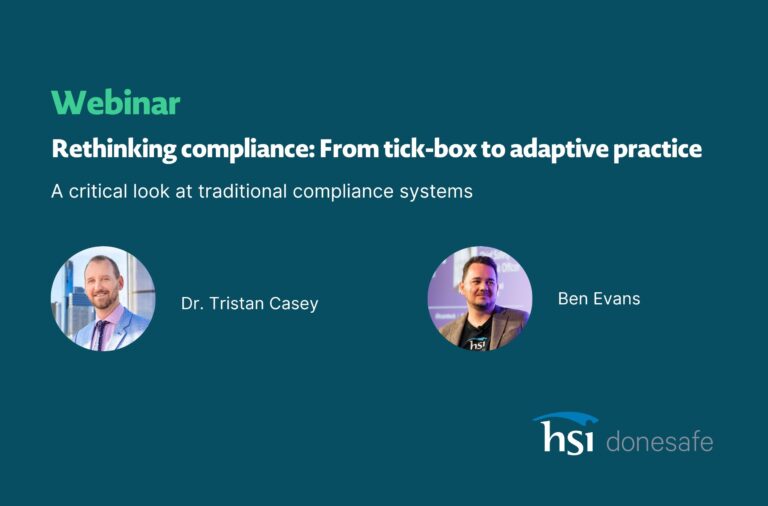
Maintaining accurate and timely records of injury is always a best practice in EHS management, but
for many organizations, it also fulfils a necessary regulatory requirement. Each year, OSHA recordkeeping rules require organizations to submit a log of recordable injuries and illnesses from the
previous year. However, some of the finer points of OSHA record-keeping compliance can confound
even the most experienced EHS managers. This post will explain which criteria make an injury
‘recordable’, as well as the difference between work-related and non-work-related injuries. It will
also review the criteria and procedure for electronic submission and maintaining compliant records
of work-related injury and illness. A little clarity in these areas can make a major difference in
streamlining any organization’s injury management response.
There are several components of OSHA record keeping; maintaining consistent and accurate records,
posting injury and illness logs in the workplace, submitting annual forms to OSHA, and immediate
reporting of severe incidents and fatalities. Many organizations are exempt from the first three due
to industry and size, but all employers under OSHA jurisdiction are required to report severe injuries
within a specified narrow timeframe (more on that below).
Who is required to maintain records?
Organizations with 10 or more employees are required to maintain regular onsite records of injury
and illness, with a partial exception for certain low-risk industries such as retail stores, restaurants,
or schools (the full list of low-risk industries can be found on OSHA’s website). However, even
organizations in the low-risk category must promptly report any case that results in a worker fatality,
amputation, loss of an eye, or in-patient hospitalization.
When should injuries be reported?
Organizations that do not qualify for the low-risk or other exemptions are required to submit their
injury management logs to OSHA once a year. However, there is a stricter reporting requirement for
certain severe injuries. Regardless of industry, every organization must report a fatality within 8
hours of the event and must report an amputation, loss of an eye, or employee hospitalization
within 24 hours of the event. To make reporting more convenient, employers may either call OSHA
directly or submit the report through this form on their website.
Which injuries should be recorded?
Injuries that do not fall into the severe category are reported to OSHA annually through Form 300A.
Again, this applies only to those organizations that are not exempt from OSHA record keeping. When
it comes to maintaining OSHA injury and illness logs, there are two criteria an incident must meet in
order to be recordable: it must be work-related and it must have occurred in the work environment.
Which injuries are recordable?
It seems simple in theory: in order to be recordable, the injury must be work-related. But for the
sake of transparency, both employers and employees need to be familiar with the criteria for a
recordable, work-related injury. This will ensure that the injured worker receives proper treatment
and compensation, and the employer follows up with accurate record-keeping to avoid fines and
penalties.
As long as they are work-related, the following are all recordable injuries:
- Death
- Injury and illness resulting in loss of consciousness
- Injury and illness resulting in missed work, restricted work activity, or job transfer
- Injury or illness requiring medical treatment beyond first aid (more on this below)
- A diagnosis of cancer, chronic irreversible disease, fractured bones or teeth, and injury to eardrums
- Special cases of occupational illness due to needlestick injury, hearing loss, and tuberculosis
Medical treatment beyond first aid
This is another category that seems clear-cut at first but might prove more complicated in practice.
First aid generally is defined as a one-time and short-term intervention applied right after the injury
occurs. Disinfecting and bandaging minor cuts or scrapes, applying heating pads or cold therapy, and
using non-prescription medication at non-prescription strength, are all considered first aid—but so
are receiving a tetanus shot, draining blisters, and drinking fluids to alleviate heat stress. The
application of first aid may or may not involve a healthcare professional. The important thing to
remember is that injuries that do not progress beyond this stage do not need to be recorded, even if
a health care professional was present.
Medical attention beyond first aid often requires the care and management of healthcare
professionals, which often makes the injury recordable. Keep in mind that there are slight variations
between basic first aid and medical treatment. For example, using non-prescription medication at
non-prescription strength is considered first aid, whereas using non-prescription medication at
prescription strength is considered medical treatment. Receiving a tetanus shot is considered
immediate first aid, whereas receiving immunization against rabies or Hepatitis B can be considered
medical treatment.
What is “work-related?”
This is another term where it is really helpful to have some clarification. According to OSHA, an injury
or illness is work-related if it was directly caused by an event or exposure in the work environment
or something in the work environment that significantly aggravated a pre-existing injury or illness.
The work environment is defined as the location where one or more employees are working or
workers are present as a condition of their employment. Beyond the location, it also includes the
equipment or materials the employee uses to do their job. This means that the work environment
can either be a permanent, set location, as well as any other location where employees must be
present in order to perform their job. The work environment can be many different things: a
corporate office, a power line being repaired by utility workers, or a semi-truck transporting goods
across the country.
Of course, sometimes it may not be obvious if the event or exposure leading to the injury or illness
actually happened in the work environment. How should such cases be handled? In these situations,
it is important to carefully evaluate the employee’s work responsibilities and work environment to
determine whether the event or exposure was directly related to something in the work
environment. You will need to evaluate whether the event or exposure caused or contributed to a
new injury or illness or significantly aggravated an employee’s pre-existing condition.
If an incident occurs in the work environment but is not impacted by work-related factors, then it is
usually not recordable. If an employee gets food poisoning from eating lunch they brought from
home or purchased on-premise, it is not a recordable incident. On the other hand, if the employee
gets food poisoning from employer-provided food or a contaminant in the work environment (such
as lead), then the injury would be recordable.
There are also degrees of difference when it comes to infectious diseases. OSHA claims that the
common cold and flu are not considered recordable injuries, but that other infectious diseases might
be recordable, so long as the employee is infected at work. This is newly relevant in the age of
COVID-19, as certain industries where social distancing is near-impossible have become clusters for
rapid disease transmission.
Shades of grey
Even with careful evaluation, there are always grey areas where it can be difficult to determine
whether an injury is work-related. In these cases, it is better to err on the side of caution if there is
enough evidence to point to a plausible impact on the work environment.
To recap: in order for an injury to be recordable, it must meet both criteria: it is work-related and
occurred in the work environment. Knowing the ins and outs of these guidelines is especially
important when non-work-related injuries happen in the work environment. For an injury to be
work-related, the affected employee must be present in the workplace in a work capacity. If an
employee becomes injured while in the ‘work environment’ as a member of the general public,
performing personal tasks rather than work duties, this injury is not considered work-related and is
not recordable.
The difference between a work-related and non-work-related injury in the work environment can be
illustrated through a sample scenario from the restaurant industry. Although restaurants are a lowrisk industry and exempt from OSHA record-keeping, this example gives a basic idea of how to
differentiate between a work-related and non-work-related injury occurring at the same time and
place. If a restaurant employee chooses to visit the restaurant for a meal or to socialize with coworkers after a shift, that employee is present in the work environment in a personal capacity. If an
incident were to injure both on-the-clock and off-the-clock employees, only the injury of the
employee who was working at the time would be recordable.
Other non-work-related injuries that might occur in the work environment include injuries resulting
from an employee’s voluntary participation in employer-sponsored programs (such as wellness
programs or flu shots) or a motor vehicle accident occurring on company property while the
employee is commuting to or from work. Any injury, in this case, is not directly related to performing
job duties and is not recordable.
Compliance
To comply with OSHA record keeping, organizations that are required to submit injury management
records must submit the previous year’s injury and illness summary by March 2nd each year. This
information is compiled on Form 300A and can be submitted electronically through OSHA’s Injury
Tracking Application.
Remember that only a small fraction of organizations are actually required to submit this
information directly to OSHA. In 2016, OSHA issued a Final Rule outlining which organizations are
required to submit Form 300A, based on size and industry. An establishment that meets any of the
following criteria is NOT required to submit the form electronically:
- Peak employment of 19 employees or fewer, regardless of industry
- Peak employment between 20 and 249 employees and not on this list
- The establishment is on the partially-exempt list, regardless of company size
Injury management and record keeping
For those who are required to keep records, OSHA has specific rules about which records should be
kept and how long they need to be available at the workplace. The records must be maintained at
the work site for a minimum of five years. Employers are also required to post a summary of the
previous year’s recorded injuries and illnesses annually between February and April. Under this rule,
current and former employees and their representatives have the right to review copies of these
records and the employer is required to provide these records upon request.
Even though most organizations are not required to submit Form 300A to OSHA directly, and many
are exempt from maintaining injury management records, it is always good practice to follow up on
safety incidents with action and to be proactive about minimizing risks and hazards, even in low-risk
industries.
Want to learn more about how Donesafe could work for your organization?
Book a Demo
Share:



